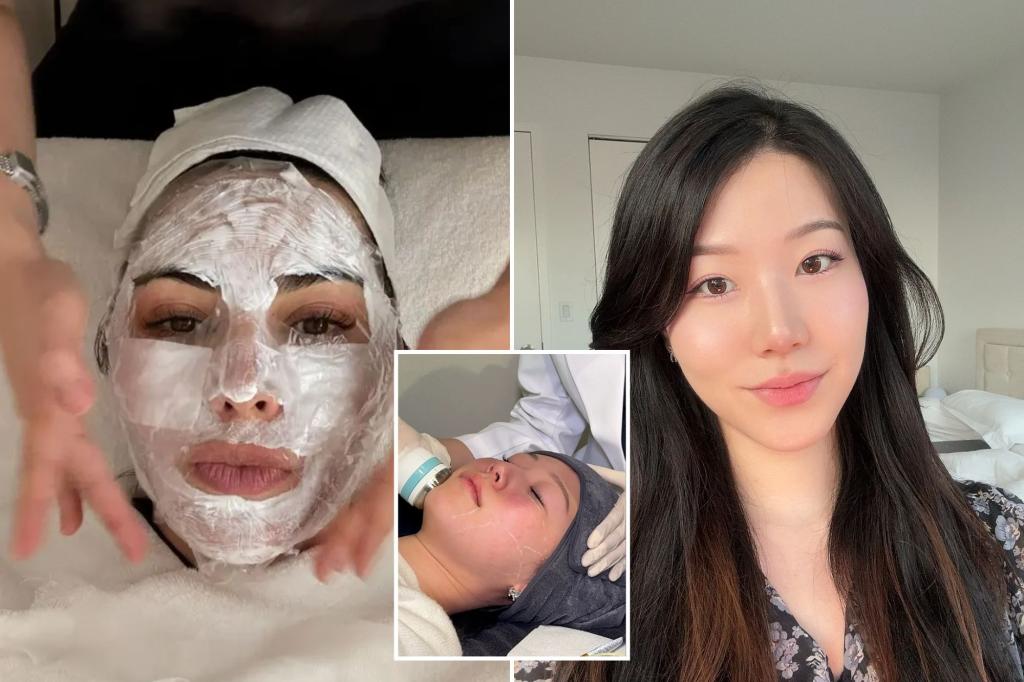The New Frontier of Beauty Tourism: Why South Korea is Calling
In an era where the pursuit of eternal youth drives countless trends, South Korea has emerged as the global mecca for cutting-edge beauty treatments. This growing phenomenon has caught the attention of celebrities and everyday skincare enthusiasts alike, with figures like Kim and Khloé Kardashian recently embarking on beauty pilgrimages to Seoul. What’s drawing these beauty pilgrims isn’t just the promise of transformation but a compelling combination of advanced technology, specialized expertise, and significantly lower costs compared to Western alternatives. The country that revolutionized the 10-step skincare routine is now positioning itself as the world’s cosmetic surgery and aesthetic treatment capital, offering procedures that many claim are years ahead of what’s available in the United States and Europe.
This beauty migration is being fueled in part by social media, where influencers like Y. Lee (known as @taxinoodle on TikTok) have amassed millions of views documenting their “glow-up” journeys to South Korea. Lee, who grew up in Korea before moving to New York for university and a career in investment banking, first captured attention with a viral post detailing the fifteen non-invasive treatments she received during a single visit. These procedures ranged from fat-dissolving injections in her chin and arms to various laser treatments, Botox applications, and even specialized “eye-sizing” to perfect the fit of her colored contacts. The dramatic cost difference is a major part of the appeal – jaw Botox that might cost $700 in the United States can be had for roughly $100 in Korea. Lee has since left her corporate job to launch BookDoctra.com, a platform offering reviews of Korean doctors and direct booking services, helping others navigate the sometimes complex process of arranging beauty treatments abroad.
While language barriers might seem like a significant hurdle, they haven’t deterred determined beauty seekers like Annette Bragas, a German makeup artist living in New York. Impressed by the results a Korean friend achieved with Dr. Song Hyungmin at the DRSONG4U Plastic Surgery Clinic in Seoul, Bragas took the plunge and traveled to Korea alone for a comprehensive treatment package. Her experience included a facelift, neck lift, and stem cell therapy, all for approximately $35,000 – a price that covered not just the procedures themselves but also nearly three weeks in a hotel for recovery, all post-operative treatments including hyperbaric oxygen therapy, a private driver for appointments, and a luxury skincare package she estimates was worth at least $600. The only additional expenses she needed to cover were her flight and meals. Bragas believes the equivalent surgery in the United States would have cost upwards of $50,000 for the procedures alone, with none of the extensive aftercare included. Many top American surgeons now charge six-figure sums for similar work.
What makes the Korean approach so distinctive isn’t just the pricing but the comprehensive nature of the experience. Bragas described her recovery environment as “basically plastic surgery city,” where patients in various stages of healing could socialize and support one another. This community aspect is part of a carefully designed recovery process that prioritizes patient comfort and optimal healing. Dr. Roy Kim, a plastic surgeon with practices in San Francisco and Beverly Hills and a member of the American Society of Plastic Surgeons, endorses the trend of Americans traveling to South Korea for aesthetic procedures, noting the country’s “very high standards of medical care, sanitation, cleanliness and ethics.” He explains that the Korean government recognizes the economic benefits of medical tourism and ensures that foreign patients receive the same high-quality care as Korean citizens. However, he does caution that those undergoing more invasive procedures should plan adequate recovery time before flying home and be aware of potential complications like blood clots.
The Korean medical aesthetic industry operates quite differently from its Western counterparts in several key aspects. Korean doctors typically hyper-specialize in just one to three procedures and often work for larger clinics rather than maintaining individual practices. Patient interaction primarily occurs through dedicated “patient ambassadors” rather than directly with surgeons, and the pace of treatment is remarkably accelerated. As Dr. Kim notes, “It is very common to be able to meet with the patient coordinator and plastic surgeon the same day, and get all pre-op blood testing, EKG, chest x-ray, and more in the same visit. Surgery is scheduled the next day or so.” This efficiency, while appealing to many international patients with limited time, also contributes to what some describe as a “factory feel” at certain clinics. Potential patients need to research carefully, understanding exactly what procedures they’re signing up for and who will be performing them, particularly given the language barriers that can complicate discussions of complex medical terminology.
Despite these considerations, the appeal of Korean beauty treatments shows no signs of diminishing. For those who have experienced the “Seoul glow,” the results speak for themselves. Bragas, like many who have made the journey, is already planning her return: “I want to go back in January and get another injection of stem cells,” she enthuses. Her experience reflects a broader shift in how people approach aesthetic enhancement – no longer limited by geographic boundaries or traditional medical systems. As more Americans and Europeans become aware of the options available overseas, South Korea’s reputation as the global epicenter of beauty innovation only continues to grow. The combination of advanced techniques, specialized expertise, reasonable costs, and comprehensive care has created a powerful draw that transcends cultural and linguistic differences. In this new landscape of global beauty tourism, Seoul stands at the forefront, offering glimpses of what might be the future of aesthetic medicine worldwide.















